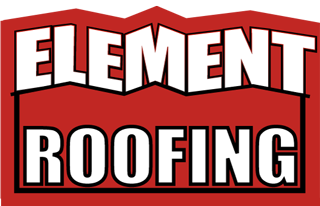
25 Apr How to Remove Ceiling Mold After a Roof Leak
How to Remove Ceiling Mold After a Roof Leak
So, you’ve had a roof leak recently? While you’ve probably already gotten a roofer out to your home to fix the immediate problem, you should also be aware of the residual side effects of a roof leak on your home. Namely, you need to look out for the ceiling mold after a roof leak. This often times doesn’t occur right away, as it takes time for mold to grow and develop. We’re here to tell you how to tell if you have ceiling mold, what you can do about it, and what safety measures to take when attempting ceiling mold removal yourself.
How to tell if You Have Ceiling Mold
Alright, you suspect that you have ceiling mold – or at least are aware that it’s a possibility after your leaky roof encounter. What signs can you look out for in order to spot ceiling mod and take appropriate action? Are there even visible signs?
The good answer is that yes, you can most often spot pretty quickly whether or not you’ve got ceiling mold. Look out for the following:
- Brown or gray ceiling discoloration
- Visible mold growth (usually dark green, brown, or black)
- A musty odor near the area of the roof leak
Aside from the above visible signs, there are also some obvious health side effects that can trigger you to realize you have mold in your home:
- Asthma attacks
- Trouble breathing
- Fever
- Sore throat
- Depression
- Headaches and migraines
- Rashes or hives
- Chronic fatigue
If you or anyone in your home is experiencing one or more of the above signs, and you know you’ve recently experienced water damage to your ceiling, then it’s time to take action. Whether you remove the mold yourself or call in a professional, make sure to address mold growth sooner rather than later.
What to Do About It
Now that you’ve established whether or not you have ceiling mold growth after a roof leak, you need to know what to do about it. Follow these steps below in order to understand the extent of the damages and take appropriate steps to remove the mold from your home.
Assess the Damage
While you might see visible mold growth on your ceiling, it’s important to remember that this might not be the extent of the growth. Mold can grow anywhere that there was water damage, meaning in your drywall, insulation, and even in your floorboards and ceiling beams. It’s important to do a thorough inspection of the nearby area to determine if mold is present. Note that you also will need to check your attic for mold growth.
Remove it Yourself
If the mold growth is in a fairly small, concentrated area, then it’s possible to effectively remove the mold yourself. The first step is to fix the cause of the water leak, of course. After that, you’ll need to remove the current mold growth with a fungicide and by physically scraping it off of the surface of the ceiling. The area must then be allowed to thoroughly dry out, and then monitored in the coming weeks to ensure the mold doesn’t return. If it does, repeat the steps above.
Call a Professional
Because ceiling mold is such a serious problem, and because mold can be so tricky and laborious to remove, we
recommend that you call a professional for any suspected ceiling  mold infestation. Why? Because you might think the mold is centralized in one small spot, but it could in fact be much more extensive than you can see with the naked eye. Professional mold abatement specialists will remove your current mold, replace any infected drywall, and ensure that the mold doesn’t come back at all.
mold infestation. Why? Because you might think the mold is centralized in one small spot, but it could in fact be much more extensive than you can see with the naked eye. Professional mold abatement specialists will remove your current mold, replace any infected drywall, and ensure that the mold doesn’t come back at all.
Safety Measures for Mold Removal
We can’t stress enough the fact that you NEED to wear protective gear when in close proximity to mold. This means even if you’re just doing a visual inspection of your attic, wear gloves, a face mask, and keep your body fully covered. Any disturbing of mold will release spores into the area, and you don’t want to breathe them in – trust us.
There you have it – how to remove ceiling mold after a roof leak. Take our advice above into consideration when dealing with ceiling mold, and remember to always gear up when disturbing any mold spores. If have a roof leak and need to get it fixed, Element Roofing offers roof leak repair and roofing in Livermore and roofing in Hayward services.


